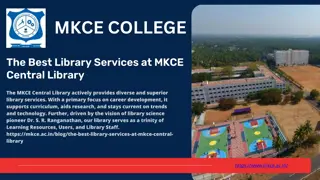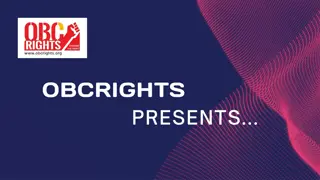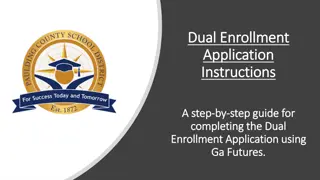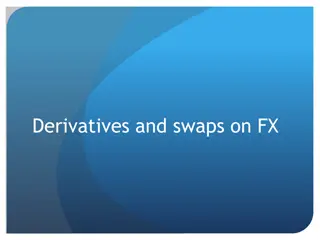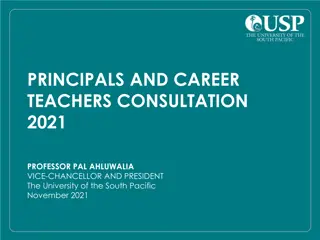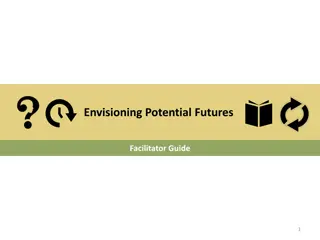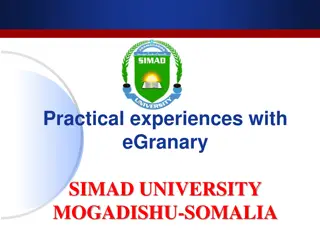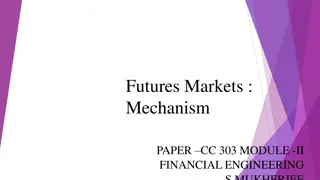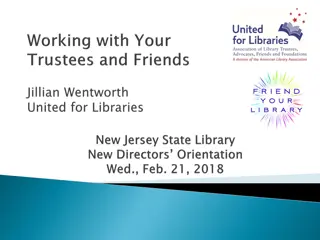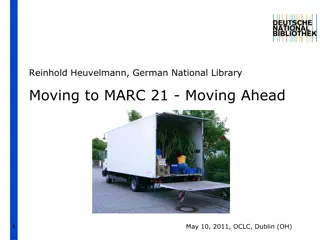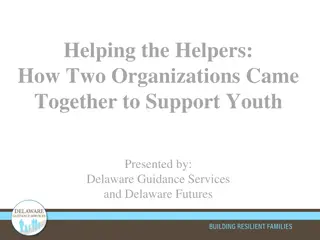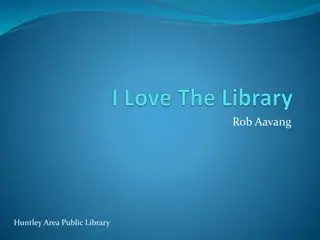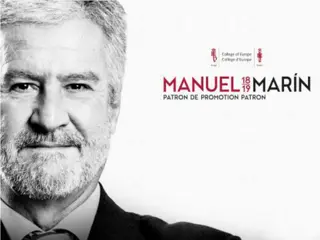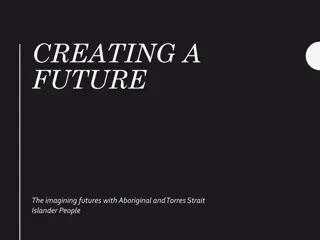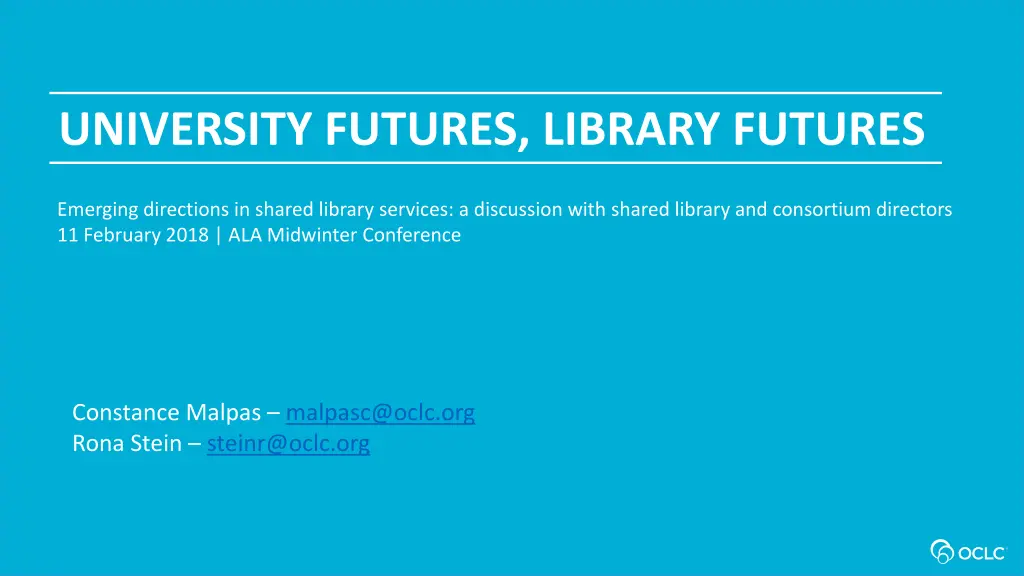
Emerging Directions in Shared Library Services Discussion
Explore emerging trends in shared library services and collaboration among academic institutions, focusing on the impact of differentiation in higher education on library organization and services. OCLC Research and Ithaka S+R collaboration sheds light on the shift towards engagement-oriented library models. Discover insights into the evolving landscape of academic libraries in the US.
Download Presentation

Please find below an Image/Link to download the presentation.
The content on the website is provided AS IS for your information and personal use only. It may not be sold, licensed, or shared on other websites without obtaining consent from the author. If you encounter any issues during the download, it is possible that the publisher has removed the file from their server.
You are allowed to download the files provided on this website for personal or commercial use, subject to the condition that they are used lawfully. All files are the property of their respective owners.
The content on the website is provided AS IS for your information and personal use only. It may not be sold, licensed, or shared on other websites without obtaining consent from the author.
E N D
Presentation Transcript
UNIVERSITY FUTURES, LIBRARY FUTURES Emerging directions in shared library services: a discussion with shared library and consortium directors 11 February 2018 | ALA Midwinter Conference Constance Malpas malpasc@oclc.org Rona Stein steinr@oclc.org
University Futures, Library Futures OCLC Research and Ithaka S+R collaboration with support from Andrew W. Mellon Foundation Examining impact of increasing differentiation of US higher education on the organization of academic libraries Shift from collection-centric model of excellence to engagement-oriented model supporting distinctive needs of parent institution More information: oc.lc/libfutures University Futures, Library Futures
Institution Typology: working model Population: 1506 US higher education institutions (HEI) comprising four-year public and private non-profit degree- granting colleges and universities Unit of analysis: institution as defined by IPEDS unit ID Institutional profiles derived from 2015 IPEDS survey data: What colleges and universities do (research, liberal education, career preparation) How/for whomthey do it (traditional vs. new traditional ) University Futures, Library Futures
Most four-year institutions exhibit multiple tendencies; they have several lines of business distinctive focus on doctoral research and scholarship Research distinctive focus on preparation for career professions distinctive focus on interdisciplinary baccalaureate education Career Liberal Education University Futures, Library Futures
Modalities of Provision in US Higher Education (N=1506): Traditional v. New Traditional Enrollment Profile and Learning Exprience 100% 90% 44% New Traditional 80% 70% 60% 50% 40% 30% 56% Traditional 20% 10% 0% Institutional percent Traditional Institutional percent New Traditional University Futures, Library Futures
Model can be used to examine groups of institutions for conformance to type University Futures, Library Futures
Model can be used to compare institutional directions in different groups Selected Group Averages BTAA SCELC Research Opportunities for shared service provision, value of cross-consortium partnerships? Career Liberal Education University Futures, Library Futures
Selected Group Averages PALNI WRLC Research Are service needs in different consortium types diverging? Career Liberal Education University Futures, Library Futures
Objectives Identify current, emerging opportunities for shared library services supporting liberal education, career preparation, research in your group or shared library Explore incentives for group-scale provision who are the key stakeholders? Who decides which services should be sourced/deployed at consortium level? 5-10 minutes to jot down reflections (we will collect these at the break) Consolidate and discuss 20 minutes University Futures, Library Futures
Research Library services, infrastructure? Library staff positions? Other library investments or activities? Career Liberal Education University Futures, Library Futures
RDM activities RIM/CRIS implementation Text and data analysis services Institution-scale library services, staff, stakeholders Research Research impact librarian Research data librarian Office of sponsored research VP for Research E-portfolios Instructional design services Fablab Training and internship resources Student Success Librarian First Year Experience Librarian Guided pathways support staff Dean of Undergrad Education Department chairs Career Services VP Enrollment Career Liberal Education University Futures, Library Futures
Shared print collections Shared research data repository Group-scale library services, staff, stakeholders Research Shared staffing: Research impact librarian Scholarly communications librarian Office of sponsored research VP for Research Shared OER repository Shared instructional design services Group licensing of test prep services Shared staffing: Student Success Librarian Shared staffing: First Year Experience Librarian Dean of Undergrad Education Department chairs Career Services VP Enrollment Career Liberal Education University Futures, Library Futures
Nontraditional is the New Traditional Nontraditional learners have at least one of these characteristics: they have no high school diploma, enrolled more than one year after high school, are financially independent from parents, work full time, or are responsible for children or other dependents (Kamenetz, 2015, p. 40) Kamenetz, Anya. 2015. DIY U: Higher Education Goes Hybrid. In Remaking College: The Changing Ecology of Higher Education, edited by Michael W. Kirst and Mitchell L. Stevens, 39 60. Stanford, CA: Stanford University Press. University Futures, Library Futures
Objectives Identify shared library services that support the distinctive needs of Distance learners Part-time enrollees Adult students What constitutes success? E.g. library/consortium role in assisting members achieve institutional enrollment/retention targets; progress toward state/funder mandate for increasing educational provision etc. University Futures, Library Futures
Resources: New Traditional Students and Library Services https://www.chronicle.com/article/The-New-Traditional-on/135012 https://www.insidehighered.com/views/2016/08/05/defining-students- nontraditional-inaccurate-and-damaging-essay http://lj.libraryjournal.com/2012/03/opinion/nontraditional-students-are-the-new- majority-from-the-bell-tower/#_ http://www.sr.ithaka.org/blog/on-non-traditional-college-students-libraries-and- family-space/ Andria L. Tieman and Megan E. Black (2017) Exploration of Library Outreach to Nontraditional Students Reference & User Services Quarterly, vol. 56, no. 3, pp. 198 205 University Futures, Library Futures
SCELC Members in UFLF Population (N=56) Research Caltech R: 0.55, LE:0.34 , C:0.11 Golden Gate University R:0.00 , LE:0.11 , C:0.89 Austin College R: 0.01, LE: 0.99, C:0.00 Career Liberal Education University Futures, Library Futures
BTAA Institutions (N=15) Research University of Chicago R: 0.49, LE:0.51 , C:0.00 Penn State University R:0.41 , LE:0.37 , C:0.21 University of Chicago R: 0.49, LE:0.51 , C:0.00 Career Liberal Education University Futures, Library Futures
WRLC Institutions (N=8) Research Georgetown University R: 0.47, LE:0.39 , C:0.14 Marymount University R:0.00 , LE:0.57 , C:0.43 Gallaudet University R: 0.05, LE: 0.73, C:0.22 Career Liberal Educaiton University Futures, Library Futures
PALNI Members in UFLF Population (N=18) Research Oakland City University R: 0.02, LE:0.58 , C:0.40 University of Saint Francis R:0.00 , LE:0.55 , C:0.45 DePauw University R: 0.00, LE: 1.00, C:0.00 Career Liberal Education University Futures, Library Futures
Minnesota Institutions (N=30) Research University of Minnesota, Twin Cities R: 0.46, LE:0.37 , C:0.18 Concordia University Saint Paul R:0.00 , LE:0.27 , C:0.73 St. Olaf College R: 0.01, LE: 0.99, C:0.00 Career Liberal Education University Futures, Library Futures
North Dakota Institutions (N=8) Research North Dakota State University R: 0.36, LE:0.40 , C:0.24 Minot State University R:0.01 , LE:0.45 , C:0.55 University of Jamestown R: 0.00, LE: 0.67, C:0.33 Career Liberal Education University Futures, Library Futures
South Dakota Institutions (N=9) Research South Dakota State University R: 0.34, LE:0.41 , C:0.35 Mount Marty College R:0.00 , LE:0.37 , C:0.63 Augustana College R: 0.02, LE: 0.72, C:0.26 Career Liberal Education University Futures, Library Futures
Pennsylvania Institutions (N=109) Research Carnegie Mellon University R: 0.50, LE:0.31 , C:0.19 Gwynedd Mercy University R:0.00 , LE:0.35 , C:0.65 Lycoming College R: 0.00, LE: 1.00, C:0.00 Career Liberal Education University Futures, Library Futures
PALCI Institutions in UFLF Population (N=62) Research Carnegie Mellon University R: 0.50, LE:0.31 , C:0.19 Philadelphia University R:0.00 , LE:0.38 , C:0.62 Lycoming College R: 0.00, LE: 1.00, C:0.00 Career Liberal Education University Futures, Library Futures
PALCI Members in UFLF Population (N=62) Institutional Percent New Traditional Enrollment Profile and Learning Experience Institutional Percent Traditional Enrollment Profile and Learning Experience 100% 90% 80% 70% 60% 50% 40% 30% 20% 10% 0% University Futures, Library Futures
Loyola Notre Dame Library Loyola University Maryland Notre Dame of Maryland University Research 0.01 0.63 0.36 Career Liberal Education University Futures, Library Futures
Auraria Institutions in UFLF Population University of Colorado Denver Metropolitan State University of Denver Research 0.40 0.14 0.47 Career Liberal Education University Futures, Library Futures



